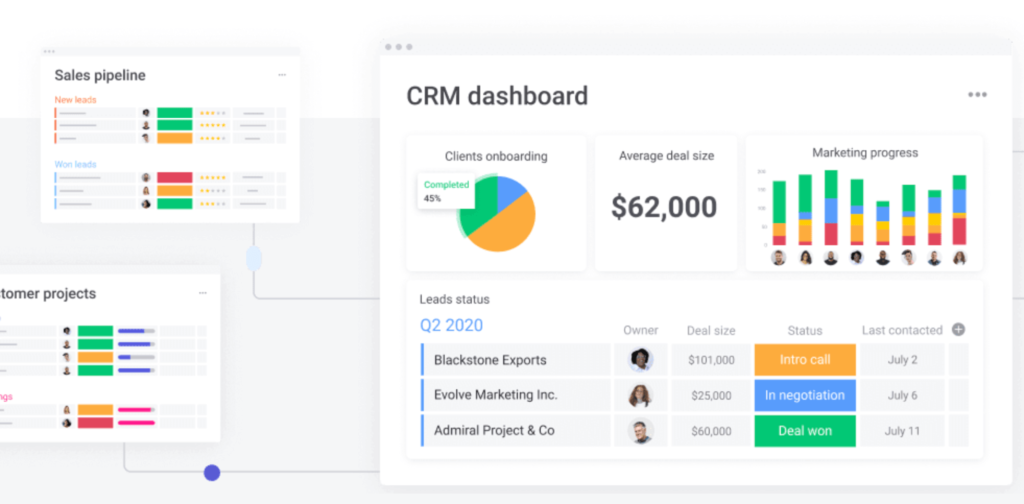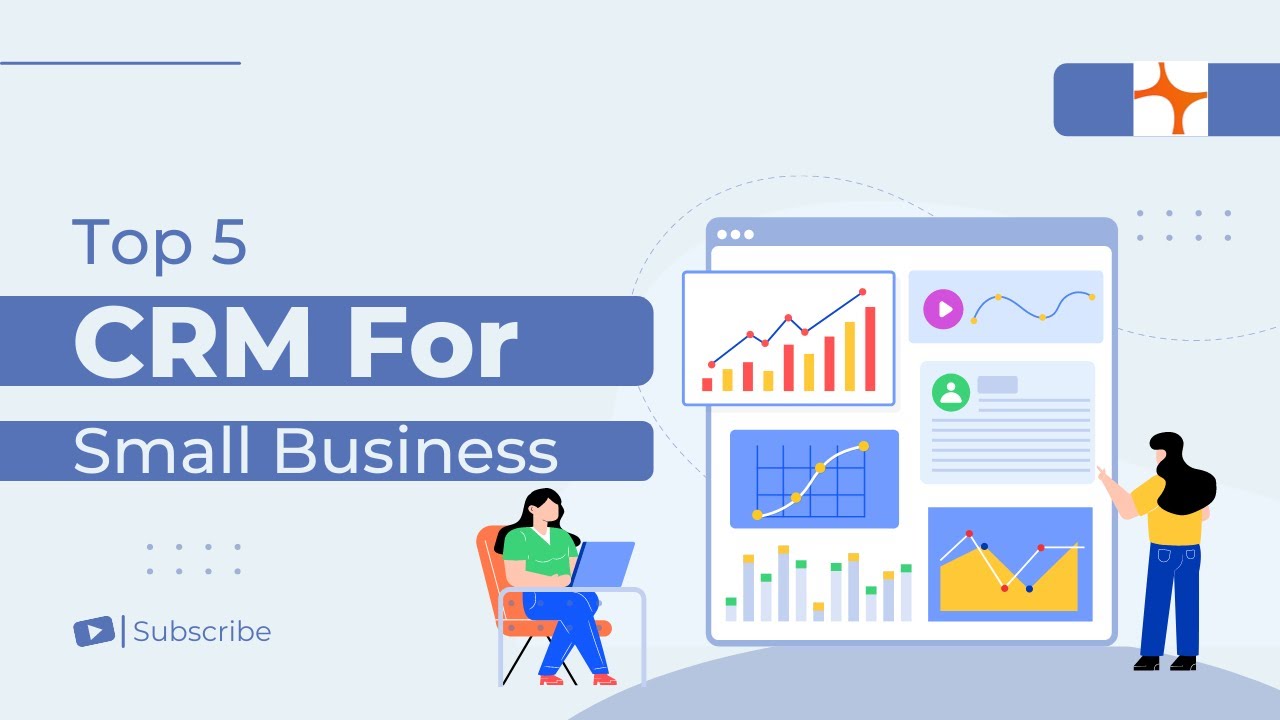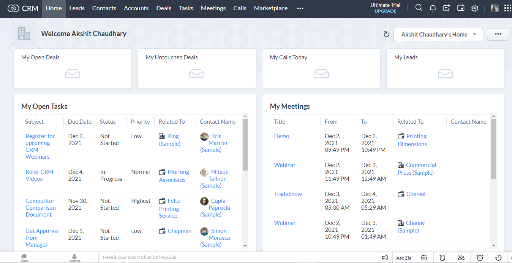
Introduction: The Artist’s Secret Weapon – A CRM
In the vibrant and often unpredictable world of art, success isn’t solely determined by talent. While artistic skill is undoubtedly crucial, managing the business side of your craft is equally, if not more, important. This is where a Customer Relationship Management (CRM) system steps in, becoming the unsung hero for small artists. Think of it as your digital studio assistant, helping you organize, connect, and thrive.
For emerging artists, juggling the creative process with administrative tasks can feel overwhelming. From tracking leads and managing contacts to scheduling exhibitions and processing sales, the workload can quickly become unmanageable. A CRM streamlines these processes, freeing up your time and energy to focus on what truly matters: creating art.
This comprehensive guide explores the best CRM options tailored specifically for small artists, detailing their features, benefits, and potential drawbacks. We’ll delve into what makes a CRM effective in the art world, helping you choose the perfect tool to nurture your career and build lasting relationships with collectors, galleries, and other industry professionals.
Why Small Artists Need a CRM
The art world is built on relationships. Building and maintaining these connections is vital for artists looking to gain exposure, sell their work, and establish a sustainable career. A CRM is the central hub for managing these crucial relationships.
Here’s why a CRM is indispensable for small artists:
- Centralized Contact Management: Say goodbye to scattered spreadsheets and overflowing email inboxes. A CRM consolidates all your contact information – collectors, galleries, curators, potential buyers, fellow artists – in one accessible location.
- Improved Communication: CRM systems allow you to segment your audience and personalize your communication. This ensures that you’re sending the right message to the right person at the right time, fostering stronger relationships.
- Enhanced Organization: Keep track of your artwork, exhibitions, sales, and financial transactions. A CRM helps you stay organized, preventing missed opportunities and ensuring efficient operations.
- Streamlined Sales Process: From lead generation to closing a sale, a CRM can automate and simplify the sales process. This includes tracking interactions, managing quotes, and processing invoices.
- Data-Driven Insights: CRM systems provide valuable data and analytics, allowing you to understand your audience, track your progress, and make informed decisions about your art business.
Key Features to Look for in an Artist CRM
Not all CRMs are created equal. When choosing a CRM for your art business, consider these essential features:
- Contact Management: The core function of any CRM, this feature should allow you to store detailed contact information, including names, addresses, phone numbers, email addresses, and social media profiles.
- Segmentation: The ability to segment your contacts based on various criteria (e.g., location, interests, purchase history) is crucial for targeted marketing and communication.
- Email Marketing Integration: Seamless integration with email marketing platforms allows you to send newsletters, announcements, and other communications to your audience directly from the CRM.
- Sales Tracking: Track leads, manage opportunities, and monitor the progress of your sales pipeline. This includes features like quote generation, invoice creation, and payment processing.
- Artwork Management: Some CRMs offer specialized features for managing your artwork inventory, including details like title, dimensions, medium, price, and provenance.
- Exhibition Management: Keep track of upcoming exhibitions, deadlines, and other relevant information.
- Reporting and Analytics: Generate reports on sales, marketing campaigns, and other key metrics to understand your performance and make data-driven decisions.
- Integration with Other Tools: Compatibility with other tools you use, such as accounting software, social media platforms, and website builders, can streamline your workflow.
- Mobile Accessibility: Access your CRM data from anywhere, anytime, using a mobile app or a responsive web interface.
- Security and Data Privacy: Ensure the CRM provider offers robust security measures to protect your sensitive data.
Top CRM Options for Small Artists
Now, let’s dive into some of the best CRM options specifically tailored for small artists and their unique needs. We’ll examine their key features, pricing, and suitability for different types of artists.
1. ArtCloud
Overview: ArtCloud is a comprehensive CRM designed specifically for the art industry, offering a wide range of features for managing artwork, contacts, sales, and exhibitions.
Key Features:
- Artwork management: Detailed tracking of artwork information, including images, dimensions, provenance, and pricing.
- Contact management: Robust contact management with segmentation and communication tools.
- Sales management: Streamlined sales process with quote generation, invoice creation, and payment tracking.
- Exhibition management: Tools for managing exhibitions, including deadlines, inventory, and marketing.
- Website integration: Integration with your existing website or the ability to create a simple website.
- Reporting and analytics: Comprehensive reporting on sales, inventory, and other key metrics.
Pros:
- Industry-specific features tailored for artists and galleries.
- User-friendly interface.
- Comprehensive features for managing all aspects of an art business.
- Excellent customer support.
Cons:
- Can be more expensive than some other options.
- May have a steeper learning curve for beginners.
Pricing: ArtCloud offers various pricing plans based on the number of users and features. They typically have a monthly subscription model.
Best for: Artists looking for a full-featured, industry-specific CRM that can handle all aspects of their business.
2. Zoho CRM
Overview: Zoho CRM is a versatile and affordable CRM platform that can be customized to meet the needs of various businesses, including artists.
Key Features:
- Contact management: Comprehensive contact management with segmentation and lead scoring.
- Sales automation: Automate sales processes, such as lead nurturing and follow-up emails.
- Email marketing: Integrated email marketing tools for sending newsletters and announcements.
- Workflow automation: Automate repetitive tasks and streamline your workflow.
- Reporting and analytics: Customizable dashboards and reports to track your progress.
- Integration with other Zoho apps: Seamless integration with other Zoho apps, such as Zoho Campaigns and Zoho Books.
Pros:
- Affordable pricing plans.
- Highly customizable to meet your specific needs.
- User-friendly interface.
- Good integration capabilities.
Cons:
- May require some configuration to adapt to the specific needs of an art business.
- Not as many industry-specific features as ArtCloud.
Pricing: Zoho CRM offers various pricing plans, including a free plan for up to three users. Paid plans offer more features and storage.
Best for: Artists looking for an affordable, customizable CRM with a wide range of features.
3. HoneyBook
Overview: HoneyBook is a project management and CRM platform designed for creative professionals, including artists, photographers, and designers.
Key Features:
- Project management: Manage projects from start to finish, including proposals, contracts, and invoices.
- Contact management: Centralized contact management with communication tracking.
- Workflow automation: Automate tasks and streamline your workflow.
- Online payments: Integrated payment processing for easy transactions.
- Client portal: Provide clients with a portal to view proposals, contracts, and invoices.
Pros:
- User-friendly interface.
- Focus on project management, making it ideal for artists who work on commission-based projects.
- Streamlined workflow for proposals, contracts, and invoices.
- Integrated payment processing.
Cons:
- Not as many features for managing artwork inventory as some other options.
- May not be as suitable for artists who primarily sell through galleries.
Pricing: HoneyBook offers monthly and annual subscription plans based on the features you need.
Best for: Artists who work on commission-based projects and need a streamlined solution for managing proposals, contracts, and invoices.
4. HubSpot CRM
Overview: HubSpot CRM is a free CRM platform that offers a wide range of features for managing contacts, sales, and marketing. It’s a great option for artists who are just starting out or those on a tight budget.
Key Features:
- Contact management: Free contact management with unlimited contacts.
- Sales automation: Automate sales processes, such as lead nurturing and email follow-ups.
- Email marketing: Free email marketing tools for sending newsletters and announcements.
- Website integration: Integration with your website to track leads and conversions.
- Reporting and analytics: Basic reporting and analytics to track your progress.
Pros:
- Free to use with a generous set of features.
- User-friendly interface.
- Good integration capabilities.
- Scalable as your business grows.
Cons:
- Limited advanced features compared to paid options.
- May require some configuration to adapt to the specific needs of an art business.
Pricing: HubSpot CRM is free to use. Paid plans offer more advanced features and storage.
Best for: Artists who are just starting out, or those looking for a free, easy-to-use CRM with basic features.
5. Dubsado
Overview: Dubsado is a client management and project management platform designed for creative entrepreneurs, offering tools for proposals, contracts, invoicing, and more.
Key Features:
- Project Management: Manage projects, tasks, and deadlines.
- Client Portal: Clients can access documents, communicate, and make payments through a dedicated portal.
- Customization: Offers extensive customization options to tailor the platform to your specific branding and workflow.
- Workflow Automation: Automate repetitive tasks such as sending emails, and creating invoices.
- Reporting: Basic reporting and analytics.
Pros:
- Highly customizable, allowing you to tailor the system to your unique brand and workflow.
- Offers a comprehensive suite of tools for managing the client lifecycle from inquiry to project completion.
- User-friendly interface with a focus on visual appeal.
Cons:
- Can be more complex to set up initially due to the extensive customization options.
- May not be as specialized for art-specific inventory management.
Pricing: Dubsado offers a monthly subscription model with varying pricing plans based on the number of clients and features needed.
Best for: Artists and creatives who value a highly customizable and visually appealing platform for managing client projects and streamlining their workflow.
Choosing the Right CRM: A Step-by-Step Guide
Selecting the right CRM can feel like navigating a maze. Here’s a step-by-step guide to help you make the right choice:
- Assess Your Needs: Before you start researching CRMs, take some time to evaluate your current workflow and identify your pain points. What tasks are taking up the most time? What areas of your business need improvement? Make a list of your must-have features.
- Define Your Budget: CRM pricing varies widely. Determine how much you’re willing to spend each month or year. Remember to factor in the cost of training and any potential add-ons.
- Research Your Options: Based on your needs and budget, research different CRM providers. Read reviews, compare features, and look for platforms that cater to the art industry or creative professionals.
- Take Advantage of Free Trials: Most CRM providers offer free trials. Take advantage of these trials to test out the platform and see if it’s a good fit for your business.
- Consider Scalability: Choose a CRM that can grow with your business. As your art career evolves, you’ll need a CRM that can handle increased contact volume, sales, and other activities.
- Prioritize User-Friendliness: The best CRM is one that you’ll actually use. Look for a platform with a user-friendly interface and intuitive features.
- Evaluate Customer Support: Make sure the CRM provider offers reliable customer support. You’ll inevitably have questions or need assistance at some point.
- Integrate with Other Tools: Consider how the CRM integrates with other tools you use, such as your website, email marketing platform, and accounting software. Seamless integration can save you time and effort.
- Read Reviews and Testimonials: See what other artists are saying about different CRM platforms. Look for reviews and testimonials from users in the art community.
- Make a Decision and Get Started: Once you’ve evaluated your options, make a decision and start using your new CRM. Don’t be afraid to experiment and customize the platform to meet your specific needs.
Maximizing Your CRM’s Potential: Tips and Best Practices
Once you’ve chosen a CRM, the real work begins. Here are some tips and best practices to help you get the most out of your CRM:
- Import Your Data: Start by importing all your existing contact information into the CRM. This includes contact details, purchase history, and any other relevant information.
- Segment Your Audience: Segment your contacts based on various criteria, such as location, interests, and purchase history. This will allow you to personalize your communication and target your marketing efforts.
- Create Custom Fields: Customize your CRM with custom fields to capture specific information about your contacts, such as their favorite art styles or preferred methods of communication.
- Automate Tasks: Use automation features to streamline your workflow. For example, you can automate email follow-ups, send automated invoices, and track leads.
- Regularly Update Your Data: Keep your contact information up-to-date by regularly reviewing and updating your data. This ensures that you’re communicating with the right people and that your CRM is accurate.
- Track Your Interactions: Log all your interactions with contacts, including emails, phone calls, and meetings. This will help you stay organized and track your progress.
- Use the CRM for Sales and Marketing: Use your CRM to manage your sales pipeline, track leads, and send targeted marketing campaigns.
- Generate Reports and Analyze Data: Use the reporting and analytics features to track your progress, understand your audience, and make informed decisions about your art business.
- Train Your Team: If you have a team, train them on how to use the CRM effectively. This will ensure that everyone is on the same page and that the CRM is being used to its full potential.
- Review and Optimize: Regularly review your CRM usage and identify areas for improvement. Make adjustments to your workflow and customize the platform to meet your evolving needs.
Conclusion: Embrace the Power of a CRM
In the dynamic world of art, a CRM is more than just a tool; it’s an investment in your success. By choosing the right CRM and using it effectively, you can streamline your operations, nurture relationships, and unlock your creative potential. It’s time to transform your art business from a scattered collection of tasks into a well-oiled machine, allowing you to focus on what you love most: creating art. Don’t let the complexities of business management hold you back. Embrace the power of a CRM and watch your artistic career flourish.

